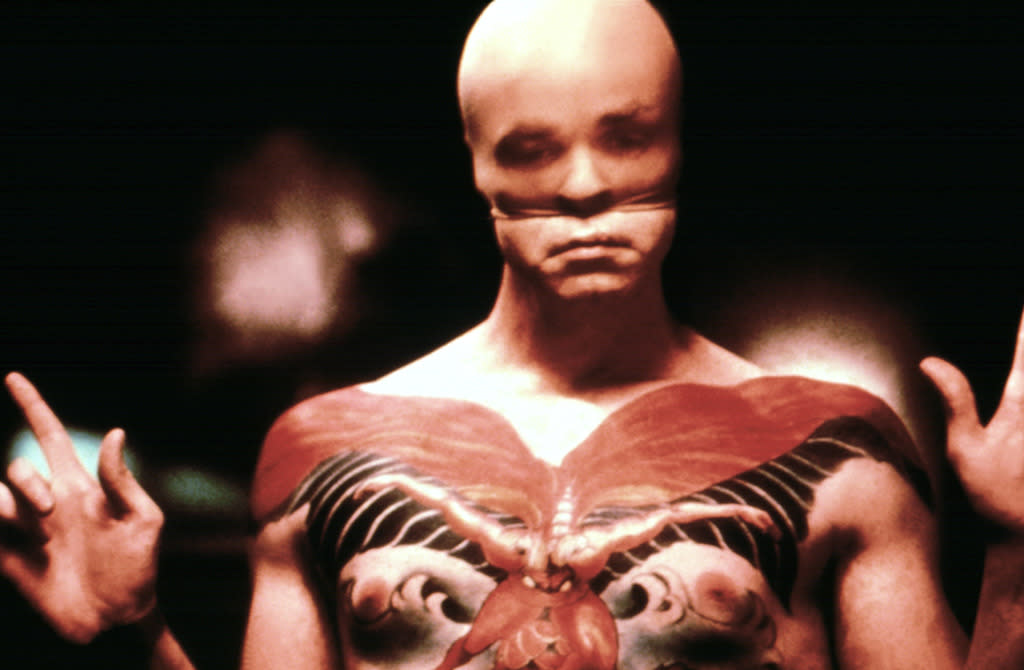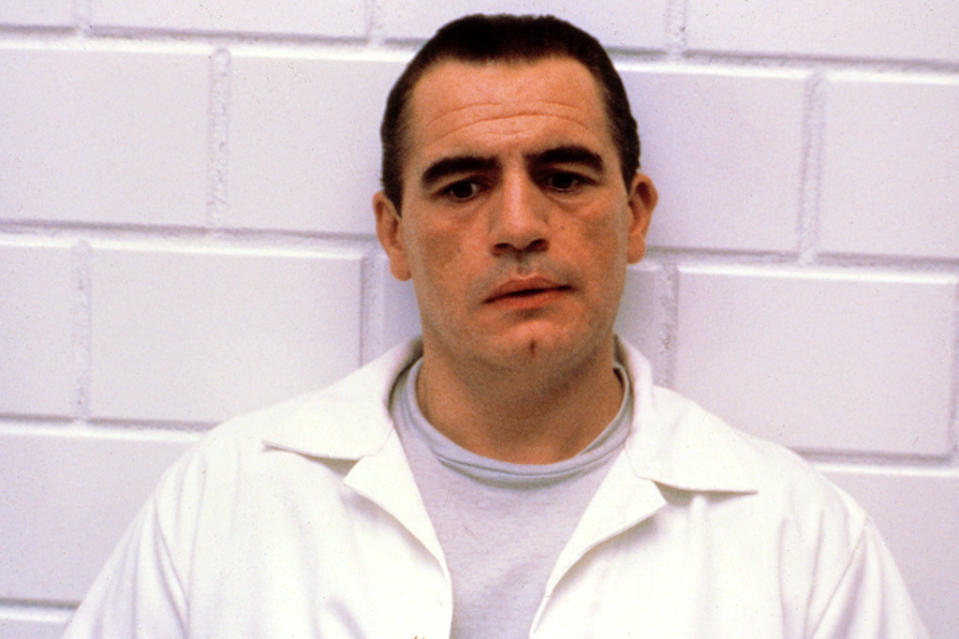Summer of '86: The Terrifying Madness of 'Manhunter' — and Our First Introduction to an Infamous Serial Killer

Tom Noonan in ‘Manhunter’ (Everett)
All this week, we’re celebrating the great movies that hit screens 30 years ago in 1986. Go here to read more.
Hannibal Lecter became a legendary big-screen bogeyman in Jonathan Demme’s 1991 Best Picture winner The Silence of the Lambs — but it wasn’t the first time the iconic villain appeared on-screen. Instead, that momentous debut took place in Michael Mann’s 1986 crime thriller Manhunter. An adaptation of Thomas Harris’ first Lecter-related novel Red Dragon (it was remade — terribly — in 2002 by Brett Ratner), Manhunter helped usher in an age of serial-killer dramas that were as interested in twisted psychology as they were in fast thrills. A genre landmark of both intense mood and nerve-wracking suspense, it served as a defining early work in the writer-director’s career, establishing many of his favorite themes and aesthetic signatures. And it now stands — 30 years later — as an entrancing, terrifying masterpiece whose substance comes, in many respects, from its style.
For his third big-screen feature, Mann — then best known for TV shows Crime Story and Miami Vice — opted to tell the story of serial-killing psychiatrist Dr. Hannibal Lecter, here spelled “Lecktor” and played by Brian Cox. In order to track down a new serial predator known as “The Tooth Fairy,” FBI profiler Will Graham (William Petersen) is brought out of retirement to aid his former boss (Dennis Farina) with the case. This is despite the fact that Graham’s tabloid-exploited experience nabbing Lecktor was so traumatic, it briefly landed him in a mental hospital. As he’ll later do with Clarice Starling in Silence, Dr. Lecktor serves as a supremely creepy expert consultant.
Watch the trailer:
Graham’s shaky psychological state comes from his ability to imagine the mindset of the monsters he’s hunting — a practice that invariably blurs boundaries between sanity and madness. Manhunter is predicated on a dynamic that Mann would later duplicate in both Heat and Public Enemies: a cat-and-mouse chase where both protagonists are mirror images of each other. In this instance, Graham is terrified by the idea that his skill at mimicking the thoughts and emotions of killers means that those twisted impulses exist within him. And such a fear is amplified by his interaction with two not-so-different-from-himself psychos: Cox’s calculating Lecktor (whose on-screen participation is kept to a minimum, for maximum scary effect), and Francis Dolarhyde (Tom Noonan), a.k.a. The Tooth Fairy, a tall, gaunt specter who believes his bloody crimes will transform him into a demonic “Red Dragon.”

Brian Cox as Hannibal Lecktor in ‘Manhunter’ (Everett)
Dolarhyde doesn’t appear until midway through Manhunter. Still, he’s arguably the most transfixing element of Mann’s film, thanks to Noonan’s off-kilter embodiment of the man as a figure of both terrifying coldness and — as when he silently weeps in bed — unnerving pitifulness. As Noonan has frequently recounted, the actor nabbed the role by literally scaring the casting assistant during his audition. “She started to get really frightened of me, which made me feel really excited and full of myself,” he said. “I could feel that [Mann] was really into what I was doing too, and I thought, ‘I got this job.’ Then I finished, and he started to talk to me. I said, ‘I told you. I’m reading and now I’m leaving.’ I just walked out.”
His character’s eventual romantic relationship with blind co-worker Reba (Joan Allen) leads to one of genre cinema’s most singularly haunting scenes, in which Dollarhyde takes her to the zoo for a visit with a sedated tiger. Her surprised awe and arousal over coming into physical contact with such a ferocious beast is echoed by both her proximity to the (unknown-to-her) lethal Dolarhyde. In that sequence, as well as others, Mann uses canny, off-center compositions and shifts in focus to convey a wealth of unspoken emotional information about his characters. A late scene features Graham, having now sent his family away for protection, staring at his rainy reflection and saying to Dollarhyde (and himself), “It’s just me and you now, sport.” Be it Graham’s to-himself narration, or the final showdown unforgettably set to Iron Butterfly’s “In-A-Gadda Da-Vida,“ Mann’s shrewd storytelling creates a bizarre, beguiling atmosphere of insanity that gets under your skin.
Watch the tiger scene:
Manhunter was too brazenly strange to touch a mainstream nerve when it premiered in August 1986: The movie’s Miami Vice-esque stylization was savaged by critics and the psychological gamesmanship was just too unsettling to earn much at the box office. Nonetheless, 30 years later, its influence is legion, from Silence of the Lambs itself to David Fincher’s Seven (and its countless imitators) to TV shows like Petersen’s own C.S.I.: Crime Scene Investigation. It’s a singular work of a director finding his voice through punchy, pulpy material. And in this time of franchise sequels and CGI tentpoles, it remains the sort of summer movie you just don’t see much anymore: strange, startling and unforgettably scary.
Read more: Summer of ‘86: 'Stand by Me’ Takes on Life, Death, and One Epic Barf-O-Rama

